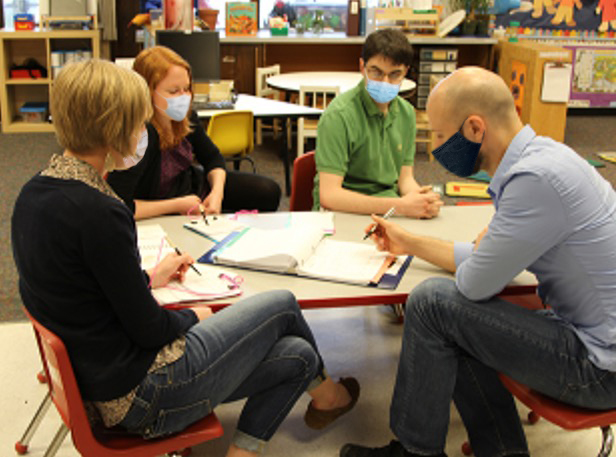 A program’s written disaster preparedness plan should include plans for epidemics and pandemics. Programs can reach out to state licensing regulators, state and local public health departments, their HSAC, child care health consultants, and infant and early childhood mental health consultants for help. They can also involve families, staff, and other community partners.
A program’s written disaster preparedness plan should include plans for epidemics and pandemics. Programs can reach out to state licensing regulators, state and local public health departments, their HSAC, child care health consultants, and infant and early childhood mental health consultants for help. They can also involve families, staff, and other community partners.
Programs can protect staff, children, and their families in an epidemic or pandemic by considering these questions for their plan:
- What will they do when a child or staff member has been exposed, has symptoms, or tests positive for the disease?
- How will they communicate with families, staff, and local public health authorities?
- How will they make their in-person services healthy and safe for staff, families, and children?
- How will they offer recovery help (e.g., mental health, job assistance, housing, nutrition, access to health care) to families and staff?
- Which staff will take part in carrying out the plan?
Tips and Strategies Related to Disaster Preparedness Plans for Health Epidemics and Pandemics
- Work with your HSAC on planning for health emergencies like epidemics and pandemics.
- Keep family emergency contact information up to date.
- Keep a supply of personal protective equipment (PPE), cleaners, and disinfectants.
- Find reliable sources of planning information.
- Make sure staff and families know what the plan is.
- Train staff regularly on using PPE and reducing the risk of spreading infectious disease.
- Encourage staff to have emergency plans for their own families.
- Consider back-up plans for covering staff who themselves are experiencing the health emergency and may need time away from work because of illness or taking care of an ill family member.
- Make this planning a high priority, because infants are more vulnerable to infectious illness and depend on adults to care for them and keep them safe.
Learn More
Read more:
Resource Type: Article
National Centers: Health, Behavioral Health, and Safety
Audience: Directors and Managers
Last Updated: June 15, 2023